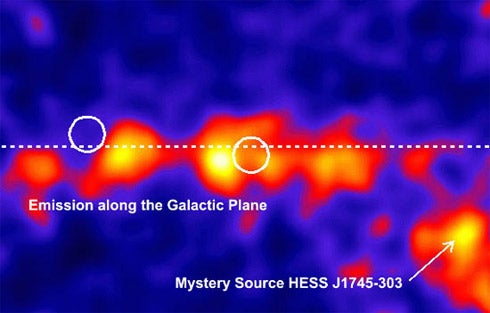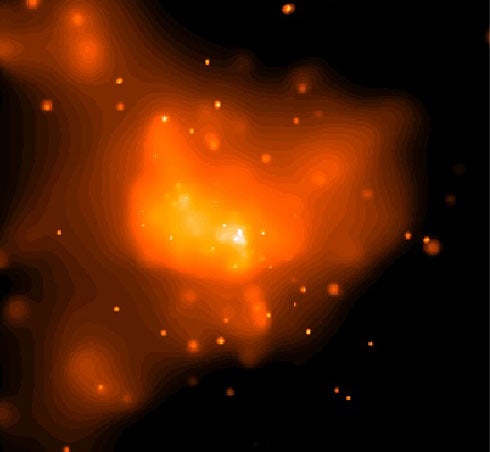Astrophysicists using the High Energy Stereoscopic System (HESS) have discovered very-high-energy gamma-ray emission from gas clouds near the Milky Way’s center. The radiation is likely the result of cosmic rays (high-energy protons and other atomic nuclei) interacting with these gas clouds. This is the first time scientists have found direct evidence for recently accelerated cosmic rays. HESS scientists believe the observed cosmic-ray signature could have been produced in a single supernova remnant.
Scientists can make direct measurements of cosmic rays only within our solar system. The source of galactic cosmic rays is still a mystery. However, when cosmic rays collide with protons in interstellar gas, they produce an array of particles, including pi mesons. Each neutral pi meson (one of three flavors) decays into two gamma rays, which scientists can detect.
Two possible cosmic-ray accelerators reside in the galactic center. The first is supernova remnant Sagittarius A East, which scientists estimate is about 10,000 years old, making this an attractive candidate. The second is the supermassive black hole Sagittarius A*, which may have been more active in the past. More observations are needed to pinpoint which is the cosmic-ray source.
HESS is an array of four gamma-ray telescopes located in Namibia, Africa. The HESS team’s results can be found in the February 9, 2006, issue of Nature.











